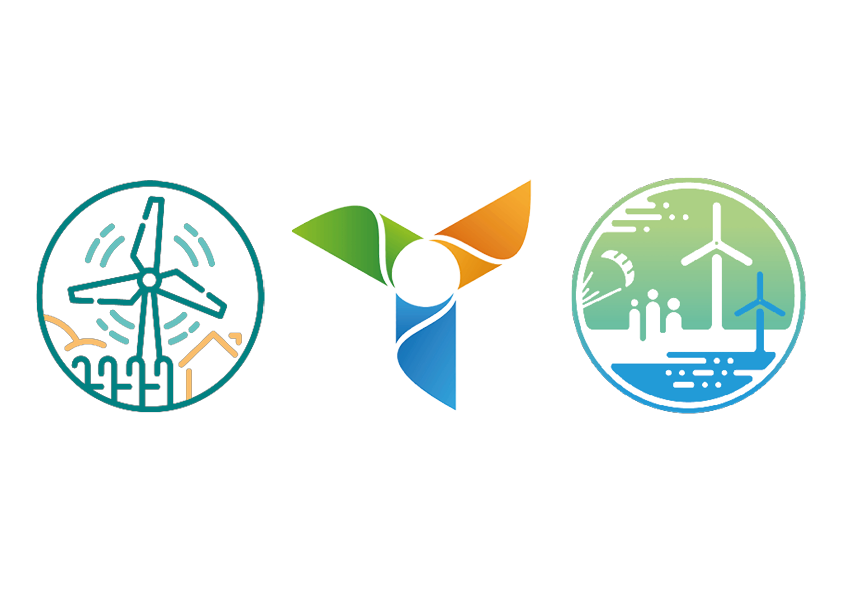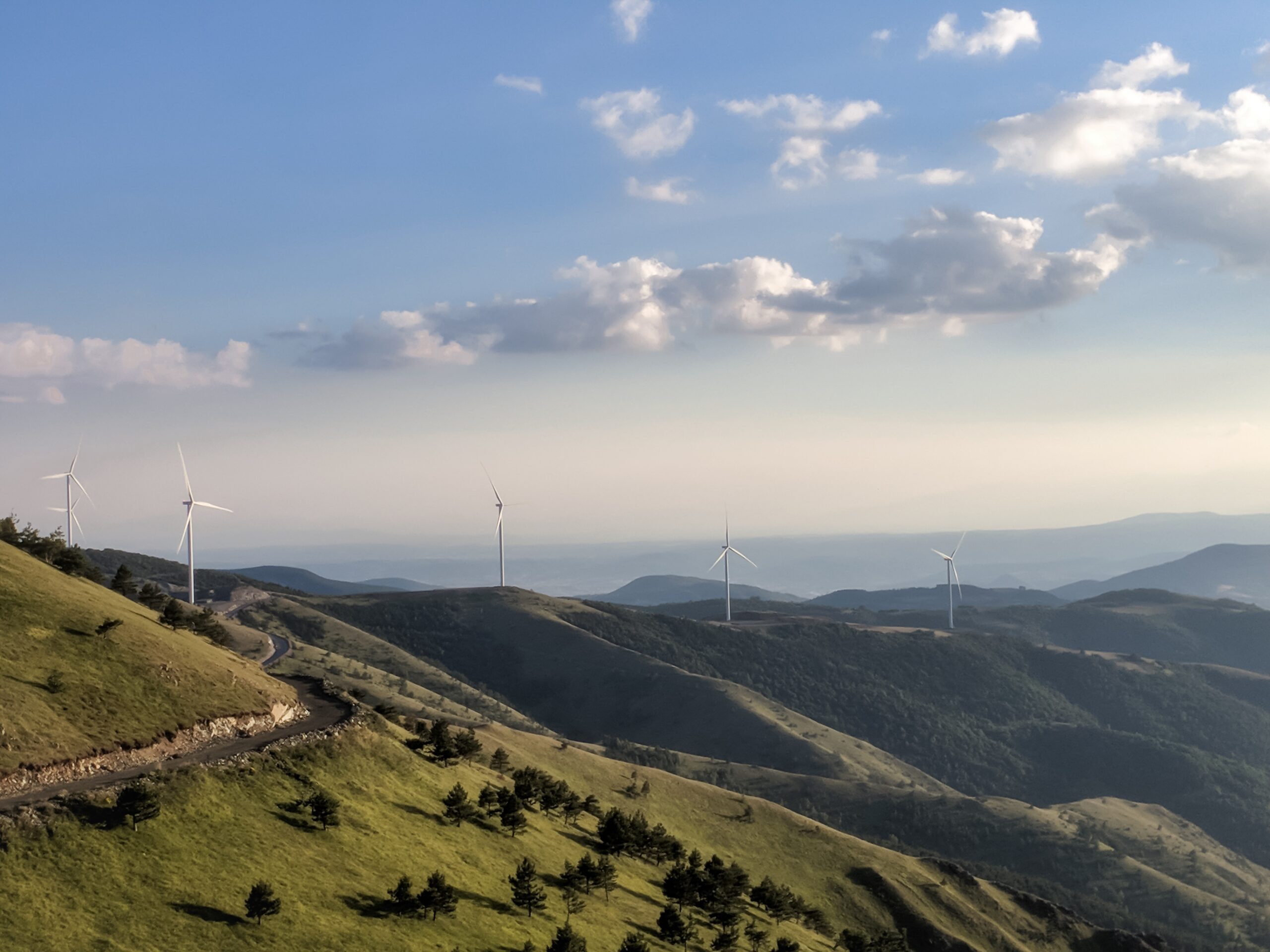A collection of shared expertise from three Horizon Europe projects – WENDY, JustWind4All and WIMBY
The Directives on the promotion of the use of energy from renewable sources (Directive 2009/28/CE, Directive (EU) 2018/2001, Directive (EU) 2023/2413) are a key element in the development of renewable energies in the European Union. They serve as a fundamental framework to guide Member States in the implementation of renewable energy policies and practices. These directives lay the foundation for promoting the use of renewable energies by guiding Member States in implementing renewable energy policies and practices in their respective territories. They also highlight the importance of public participation and social acceptance in the sector.
However, despite the progress made, challenges remain, particularly concerning around public participation. Efforts are still needed to ensure effective and meaningful participation of local communities and stakeholders at all stages of the process. Barriers faced by wind projects need to be addressed, such as simplifying administrative procedures, and improving transparency and communication. Additionally, there is a need to challenge existing preconceived ideas, encourage collaboration, and provide more opportunities for stakeholder involvement. These actions will help increase public and social support for wind energy projects and ensure their acceptability in society.

Member States are implementing the European guidelines on environmental impact assessment, energy and climate targets for 2030, spatial planning, administrative efficiency, and public consultation, among other areas. However, there are differences in how these guidelines are adapted to the specific characteristics and needs of each country. Despite these variations, there is a shared commitment among Member States to boost the development of onshore wind energy.
Additionally, the EU has taken significant legislative steps to facilitate the development of offshore renewable energy sources, providing guidance to Member States in this regard. The EU strategy on offshore renewable energy targets an installed capacity of at least 60 GW of offshore wind and 1 GW of ocean energy by 2030. Initiatives such as the ‘Clean Energy for All Europeans’ package aim to foster public participation and social acceptance, although specific rules on community development in wind projects are lacking. However, concepts such as Renewable Energy Communities (RECs) and Citizen Energy Communities (CECs) are integrated into the regulatory frameworks of all Member States to encourage consumer participation in the clean energy transition.
On balance, although implementation strategies vary from one Member State to another, there is a collective commitment to progress towards the EU’s energy and climate objectives. This is particularly evident in the development of onshore and offshore renewable energy and the promotion of public participation in the transition.
Preliminary regulatory aspects relevant to key stakeholders
Concerning administrative procedures, transparency, and stakeholder involvement, not all European countries are on the same page, and the rate of adoption can vary significantly, even among neighbouring regions. This largely depends on the local context and institutional support and capacity to address information and authorisation needs.
In recent months, the WIMBY project conducted several interviews to explore the needs, expectations, and concerns from diverse stakeholders across Europe. Participants included farmers, primary and high school teachers, environmental impacts experts and engineers, DSOs representatives, and local institution representatives. The findings revealed that the main difficulty is the poor access to up-to-date, comprehensible, and comprehensive information related to existing wind farms and their actual impacts, both positive and negative. Access to ongoing and planned projects is also limited to highly technical content (such as VAS documentation), which is often difficult to read for both for experts and non-experts who seek more “digestible” summaries. Another issue highlighted by most participants is the difficulty in quickly navigating the national, regional, and specific regulations and incentives applicable to a specific area. To unlock bottom-up initiatives, information related to soft and hard constraints should be publicly available, and immediate comparison should be enabled.
The three sister projects – JustWind4All, WIMBY and WENDY – are working hard to bridge this information gap and facilitate informed discussions and decision-making. By using powerful tools such as web-GIS systems, 3D simulation environments, and discussion forums, these projects aim to provide easy access to all target stakeholders. They hope to create opportunities of mutual learning and trust across institutions, developers, and civil society, while keeping transitional and procedural justice at the core of all decisions.
Accelerating Wind Power Development: The Accele-RES Initiative and Its Role in Meeting EU Climate Targets
The European Union now finds itself at a critical juncture in the race against climate change. The ambitious targets set for 2030 and 2050 demand swift and effective energy actions, including wind power development. With barriers such as technical complexities, social resistance, and environmental concerns, the EU and its Member States cannot afford further delays and lessons must be learned from past failures.
JustWind4All and WIMBY will tackle these challenges in a European Sustainable Week (EUSEW) session titled “The answer is in the wind: the Accele-Res initiative for a holistic approach to wind power”. To create a streamlined path for wind energy projects, the Accele-RES Initiative introduces Renewables Acceleration Areas (RAAs). However, the effectiveness of RAAs relies heavily on their design and the level of collaboration among stakeholders. Member States must embrace a comprehensive planning approach, considering technical, environmental, and social factors, and actively involve citizens in RAA implementation. Additionally, ecosystem-based spatial planning is crucial for mitigating environmental impacts and advancing the EU’s climate objectives.
By bringing together diverse stakeholders, including the wind industry, NGOs, policymakers, and researchers, the session will offer a platform to explore the complexities associated with Accele-RES implementation. A panel discussion with five speakers will focus on the challenges and opportunities for Member States to designate and implement Accele-RES for onshore and offshore wind energy in a holistic manner, ensuring benefits for communities and nature.
Key insights and future directions for wind power development in the EU
As the European Union advances towards its energy and climate objectives, the need for swift and effective action in wind power development becomes increasingly evident. Initiatives like the Accele-RES Initiative offer promising pathways, yet their success hinges on robust collaboration and comprehensive planning, integrating technical, environmental, and social dimensions. The upcoming EUSEW session will serve as a platform for stakeholders to delve into these complexities by fostering dialogue among diverse stakeholders. The aim is to address the challenges and opportunities associated with Accele-RES implementation for both onshore and offshore wind energy.
Disparities in administrative procedures, transparency, and stakeholder involvement persist among European countries, influenced by local contexts and institutional capacity. The recent findings of the WIMBY project underscore the need for accessible, comprehensive information and streamlined regulatory frameworks to unlock bottom-up initiatives and foster informed decision-making.
In conclusion, fostering dialogue and ensuring the accessibility of information to all stakeholders are paramount for the success of any project, especially the ones dealing with social acceptance. Involving every party in the various stages of development not only promotes transparency but also facilitates a clear understanding of the process. When information is readily available, it enhances acceptance and trust among stakeholders. The innovative tools being developed by the WIMBY, WENDY, and JustWind4All projects, such as web-GIS systems and 3D simulation environments, are designed to make this possible. These smart and user-friendly solutions ensure that even those with less technical knowledge can grasp the intricacies of the project, thereby fostering a more inclusive and collaborative environment.
A collection of shared expertise from three Horizon Europe projects – WENDY, JustWind4All and WIMBY
As WIMBY, JustWind4All, and WENDY are collectively working on a transformative journey towards sustainable wind energy adoption, we invite you to become an integral part of this movement. Stay connected with us on social media platforms, where we share the latest updates, insights, and impactful stories. Subscribe to our newsletters for in-depth information, behind-the-scenes glimpses, and exclusive content.
By following our projects, you actively contribute to the discourse around wind energy acceptance, enabling a future powered by clean, renewable sources. Together, we can break down barriers and foster understanding.
Keep an eye out for upcoming activities— workshops, events, surveys —where your participation can make the difference.

In synergistic collaboration, this article has been made possible through the active participation of three EU-funded projects: WENDY-101084137, WIMBY-101083460, JUSTWIND4ALL-101083936.

